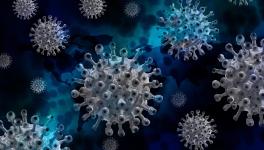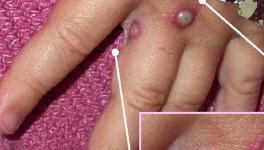How to Know Whether a Virus Variant Can Escape Vaccine Protection
Vaccines are supposed to be the most effective way of taking control over COVID-19. But, at the same time, with the emergence of newer variants of the virus, the fear of these variants escaping the protection provided by vaccines looms large.
Scores of news now appear that one vaccine is effective against some variants, whereas, another vaccine is not that effective and so on. There are certain variants that are said to be able to escape the vaccine-protection.
Such news is enough to add worries to the strenuous health crisis that all of us are struggling to get over. So it is important, while continuing with existing precautions, to also get acquainted with the facts and probabilities that science hints towards.
Coming back to the concern of vaccine-escapable variants, certain points are crucial to understand. Firstly, when can it be said with affirmation that a variant is vaccine-escapable? Are there some parametres to judge whether a variant is able to defy vaccine protection?
To get into these questions, some basics need to be understood. A vaccine mimics the virus (or bacteria) against which it is developed. In doing so, a vaccine administers a part of the virus or an inactivated version of it to the body. The immune system (the body’s defense mechanism against an infection) gets activated and clears off the foreign object and in this process, the immune system also mounts a longer protection by giving rise to memory against the foreign object. Later on, when the virus actually attacks a vaccinated individual, the protection provided by the vaccine easily fights the attack and saves the individual.
Speaking to Newsclick, Prof Saumitra Das, the director of NIBMG (National Institute of Biomedical Genomics) in Kalyani, West Bengal, elaborated the science behind the process. On the aspect of how to judge whether a virus variant can really escape the vaccine protection, Prof Das said, “It’s very difficult to predict. Variants you can see in terms of differences in the genetic sequence, and all other comments hereafter are based on correlations and predictions.”
“Correlation is when that is really happening to people who are vaccinated. When one vaccinated individual gets re-infected by a variant then we can think that the antibodies produced by the vaccine are no longer strong enough to provide protection. However, that is a possibility. But to say anything conclusively, we will need more and more data on our population,” he explained.
Prof Satjayit Rath of IISER (Indian Institute of Science Education and Research), Pune also had similar views. He said to Newsclick, “The only way of judging that a 'variant can defy vaccine protection' is to find it in real-life situations of re-infections in vaccinated individuals in large numbers. All other ways are guesses, inflated into media headlines. All the current SARS-CoV-2 variants appear to have been selected for improved transmissibility, by and large driven by changes in the spike protein.”
The second aspect is that vaccine protection does not only involve neutralising antibodies, which are an important defense against virus invasion. These antibodies do not simply bind to a virus; they can bind in such a fashion that blocks infection. Vaccines produce such neutralising antibodies. These can persist to offer protection against future encounters with the same virus.
If an infection really happens, it can take quite some time for the host to produce such neutralising antibodies. Remember, antibodies are proteins that are produced by the immune system to fight an infection.
Apart from the neutralising antibodies, vaccines can also induce T cell mediated immunity. The T cells are a special type of cell belonging to the immune system. These cells are activated in response to an infection. The T cells elicit cascades of events in order to fight off the infection.
So, the question is whether saying that a variant is capable of escaping vaccine protection only on the basis of weakening of the neutralising antibodies is appropriate. Commenting on this, Prof Rath said, “Of course, there is the landscape of CD4 and CD8 T cell responses (CD4 and CD8 are types of T cells). These would recognise 'variants' quite well by and large. However, we are quite in the dark so far about the significance of these T cell immune responses (independent of their influence on antibody formation) for protection against infection and/or disease.”
The T cells can recognise a part of the virus or any other infectious agents, called the epitope. In the case of the coronavirus, it enters human cells with the help of its spike protein. The spike protein can reasonably stick to another protein called the ACE2 protein present in human cells. The primary surveillance cells of the immune system can take a viral particle inside them when they detect it. Inside these immune cells the proteins present in the virus are cut into pieces. These smaller fragments of the viral proteins are called the epitopes. These epitopes hereafter are brought to the surface of these immune cells and it is when the T cells recognise them.
Prof Das elaborated on this point saying,“The RBD (Receptor Binding Domain) has most of the epitopes, (RBD is a portion in the spike protein and this portion is specifically responsible in binding to the ACE2 proteins present in human cells). If mutations take place in this portion, whether it offers the virus greater infectivity (greater binding to ACE2 protein) or immune escapability, need to be validated experimentally. That has to be done quickly in animal models in laboratory. But the experiments are not completed overnight.”
“Even if mutations occur in a single protein, it has multiple epitopes and it is unlikely that all the epitopes are affected due to single mutation,” he added.
“It’s important people should be alert and more careful but at the same time we need sufficient experimental evidence and clinical correlation to attribute a mutation to a particular property,” Prof Das further cautioned. He also said that mutations are ‘contextual’. He said, “Mutation is one thing, but mutation in the context of other mutation is another thing. Mutation that happen in one variant and mutation in another variant, for example the delta variant, may not be the same. The 3D conformational changes in a protein due to a particular mutation is also dependent on other mutations taking place nearby.”
The other aspect is that of majority of the vaccines against SARS-CoV-2 is having a single target, that is the spike protein. Can that be attributable to vaccine escape by variants? Most of the variants have mutations in the spike protein and vaccines are targeted to this protein.
Prof Rath explained, “All the current SARS-CoV-2 variants appear to have been selected for improved transmissibility, by and large driven by changes in the spike protein. This is also the vaccine target and neutralising antibodies are directed against that target. So, it is not surprising that those antibodies show loss of potency against the variants. Thus, there are a lot of data emerging about the loss of 'potency' of vaccine-generated neutralising antibodies against variant strains. However, we don’t have a really good idea as yet about what levels of neutralising antibodies are needed for what levels of protection (though there is some very promising work coming up in that area). As a result, we don't know what the real-life implications of the observed 'loss of potency' of neutralising antibodies are.”
As a general message to the people, Prof Das appealed that it is on part of our duty to follow appropriate behaviours, such as avoiding crowded places, maintaining physical distances, avoiding rallies and gatherings, wearing masks etc. “The virus needs a host to survive and replicate. If we don’t provide ourselves as the host, the virus will not survive in the nature,” he added.
Get the latest reports & analysis with people's perspective on Protests, movements & deep analytical videos, discussions of the current affairs in your Telegram app. Subscribe to NewsClick's Telegram channel & get Real-Time updates on stories, as they get published on our website.
























